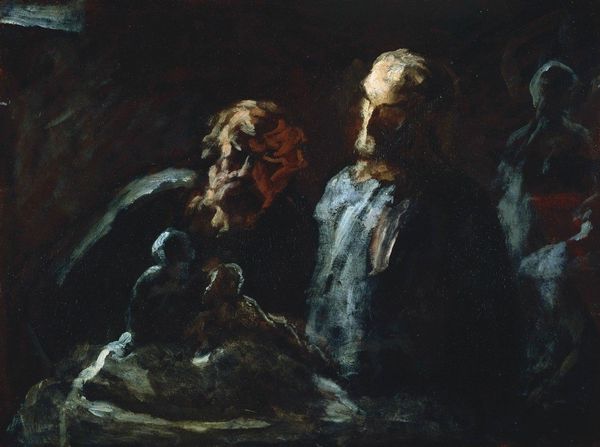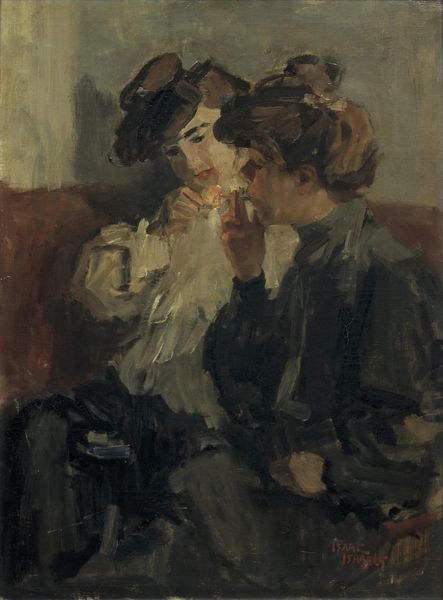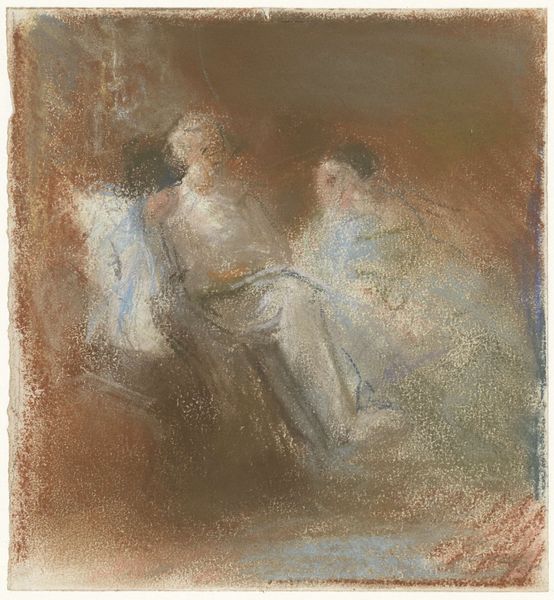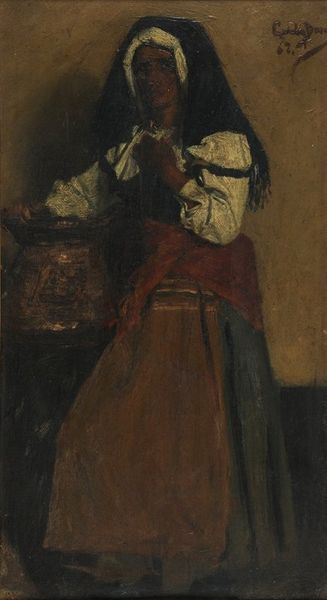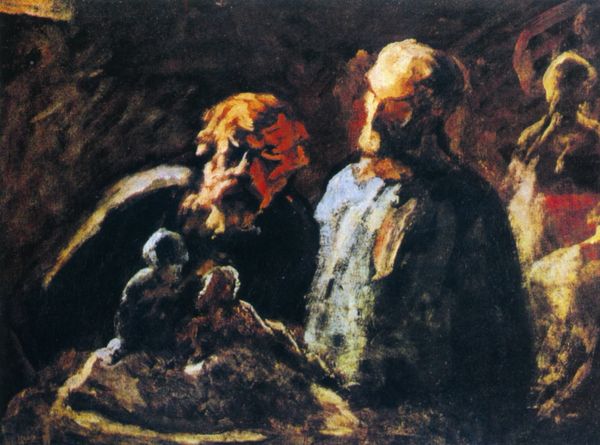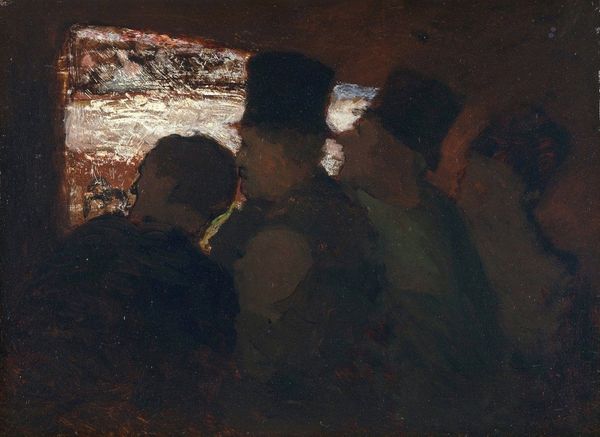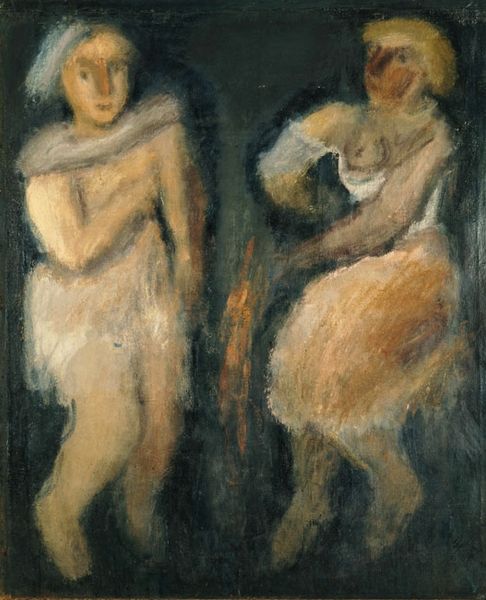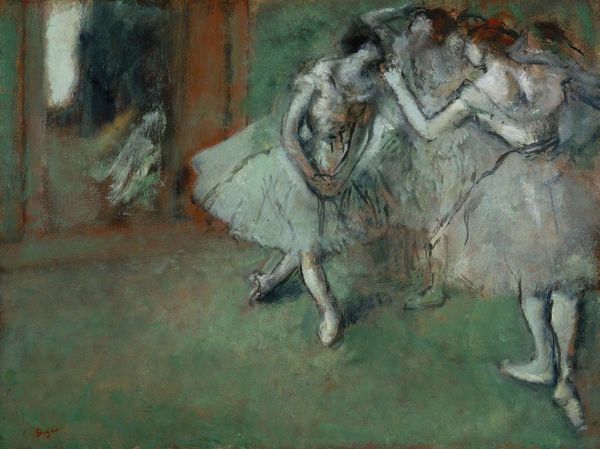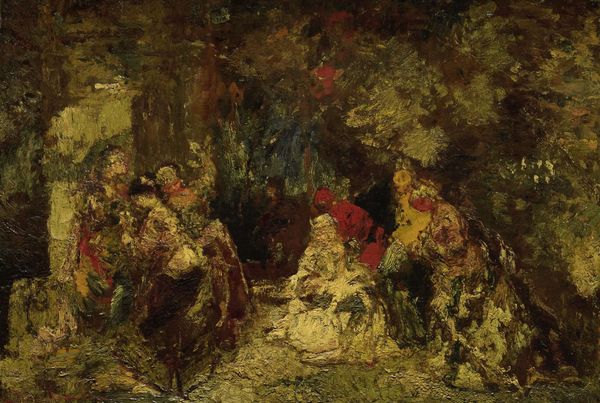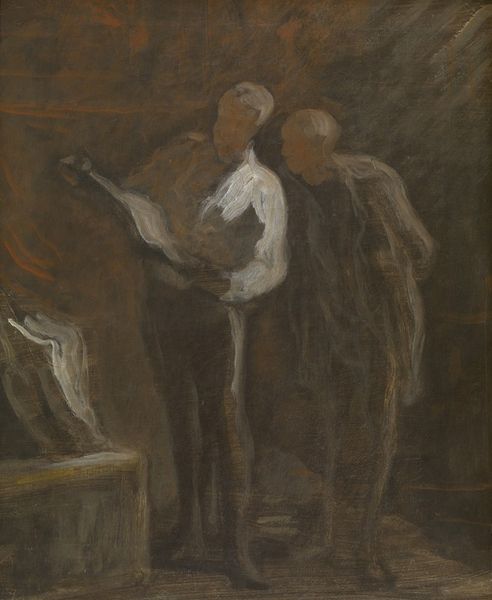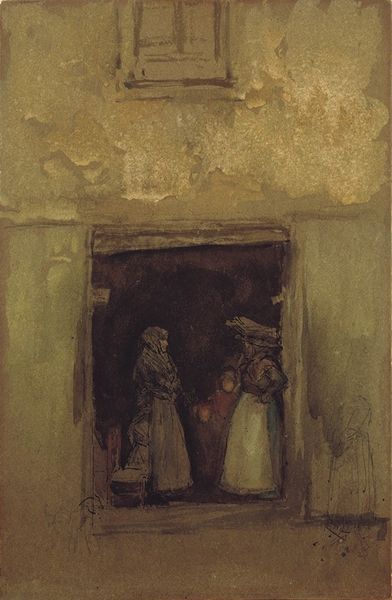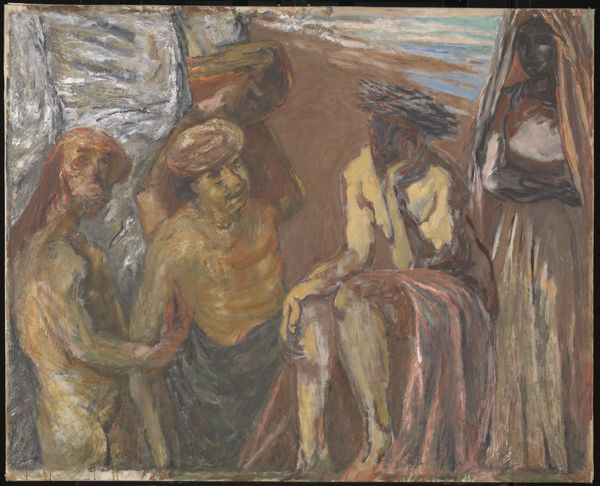
Copyright: Public Domain: Artvee
Curator: Honoré Daumier created "In Church" sometime between 1855 and 1857 using oil paint, in an impasto style that emphasizes texture. What are your initial thoughts? Editor: Somber. Almost claustrophobic, really. The palette is muted, and the brushwork feels hurried, giving the whole piece a raw, unfinished feel. It’s less about reverence and more about…something unspoken. Curator: Indeed. Daumier often explored themes of social injustice and class struggle, even within the Church, which at that time was seen as upholding bourgeois values. It invites us to ask who exactly is this worship meant for? Editor: The head coverings are definitely telling. The two figures most clearly depicted wear simple bonnets. Are they perhaps working-class women seeking solace or social standing in religious practice? The implied meaning may go beyond mere devotion. Curator: Precisely. Notice the deliberate ambiguity. The anonymity granted by the setting allows Daumier to subtly critique power dynamics and the role of religion within society, specifically for those women whose lives were constrained. Editor: I'm particularly struck by the symbolism inherent in the obscurity of the third figure. Partially erased, they appear consumed by the darkness, highlighting societal neglect of the marginalized. It’s as though Daumier implies their stories are willfully ignored. Curator: It underscores Daumier's wider commentary on the social positioning of women at the time, especially considering their limited opportunities and expected adherence to tradition and societal expectations of piety. Their expressions, although subtle, suggest a silent defiance. Editor: Looking at it, it almost feels like a stage. The shallow depth of field combined with the low vantage point, brings theatricality. And makes us as the viewer, just like them – as if we’re fellow observers in this somber theater of faith and social disparity. Curator: That sense of theater mirrors Daumier’s wider career as a lithographer and caricaturist, often commenting on Parisian life. This genre scene quietly captures the complexities of faith, class, and gender in 19th-century France. Editor: I find the stark contrast between the highlighted faces and the deep shadows to be powerfully evocative. They bring a sense of realism, underscoring the human element in contrast with the institution itself. Curator: Indeed, its power lies in its understated critique and enduring relevance. Editor: A powerful image, fraught with quiet tension.
Comments
No comments
Be the first to comment and join the conversation on the ultimate creative platform.
